Apple’s MacBook Pro with Retina Display will soon be just the MacBook Pro, period. But this generation two version of both the 13- and 15-inch super slim notebooks with high-res displays is still something many average users will be weighing as an outlier possibility versus the more mainstream MacBook Air. But thanks to price cuts and smart improvements under the hood, Apple’s Retina MacBook has grown up a lot since the 15-inch version made its first appearance back in June 2012.
Video Review
Basics
- 2880 x 1800 (Retina), 15.4-inch display
- 256GB storage
- 2.0GHz quad-core Intel Core i7
- 8GB RAM
- 0.71 inches thick, 4.46 lbs
- 802.11ac Wi-Fi
- 8 hours battery life
- $1,999
Pros
- Screen is best-in-class
- Thin and light design despite ample power
- Now includes iWork apps for free
- $200 price cut versus previous entry-level version
Cons
- Still pretty beefy compared to Air and 13-inch Retina Pro
- Battery life now on the low end of MacBook spectrum
Design
The MacBook Pro with Retina display is a crowning achievement for Apple’s notebooks not only because of its screen, but also because it manages to trim size and weight compared to the legacy non-Retina MacBook Pro models. You’re not going to get the featherweight quality of the MacBook Air, but you will get a big break if you’re used to one of the older, bulkier pro models.
This 2013 15-inch model retains the exact same physical dimensions as its predecessor, weighing in at just under three and a half pounds, and under three-quarters of an inch thick. In absolute terms, that’s not all that svelte, but for a device that gives you a spacious 15 inches of display real estate, which can manage a surprising 2880 x 1800 resolution if you use a third-party app to scale beyond the built-in supported max resolution, it’s very impressive.
It’s hard to tell from my limited time with the machine so far, but I also believe that Apple has addressed one of the primary failings of the generation one product, which could suffer from case creak with the bottom panel in some instances. Compared to my personal 2012 15-inch Retina Pro, it feels more solidly constructed, for what it’s worth. And as always, Apple’s aluminum and glass construction stands up to any aesthetic test you could apply to it.
Performance
This Retina Pro actually appears on paper to take a step back when it comes to its graphics card, which is an Intel Iris Pro integrated model, vs. the NVIDIA GeForce GT 650M that shipped alongside an Intel HD 4000 integrated card on the original version. The dedicated graphics on the past model could definitely come in handy for graphics-intensive processes, but as AnandTech pointed out in a review of the Iris Pro earlier this year, it manages to come “within striking difference” of the 650M when it comes to performance, while offering considerable battery and heat savings, both of which are good in the short term and for extending the overall life of the notebook.
Of course, the really important factor to consider here is how the Iris Pro holds up in real-world usage situations, and I found I didn’t miss the discrete GPU in any of my usage scenarios. Whether working with Final Cut Pro X, Photoshop CC or even games like Bioshock Infinite, the Intel Iris Pro seemed to handle my needs pretty adequately, though you aren’t going to want to run games at maxed out graphics settings. One advantage of not having the discrete GPU, too, is that I find the fan spins up far less often, making for a much quieter notebook overall.
If you’re new to flash storage, you’re also in for a treat with the 15-inch Retina MacBook Pro, since it now uses a super fast PCIe-based memory type that all but eliminates any thought of startup delays, or stutters while opening apps. It’s now gotten to the point where, just like on mobile, it’s not a question of how fast your computer is – the only way you notice any slowness is when you go back to a previous version. This year’s model is snappier all around that the one it replaces, and that was already essentially a machine that gave you everything at your fingertips pretty much as soon as you think about wanting it.
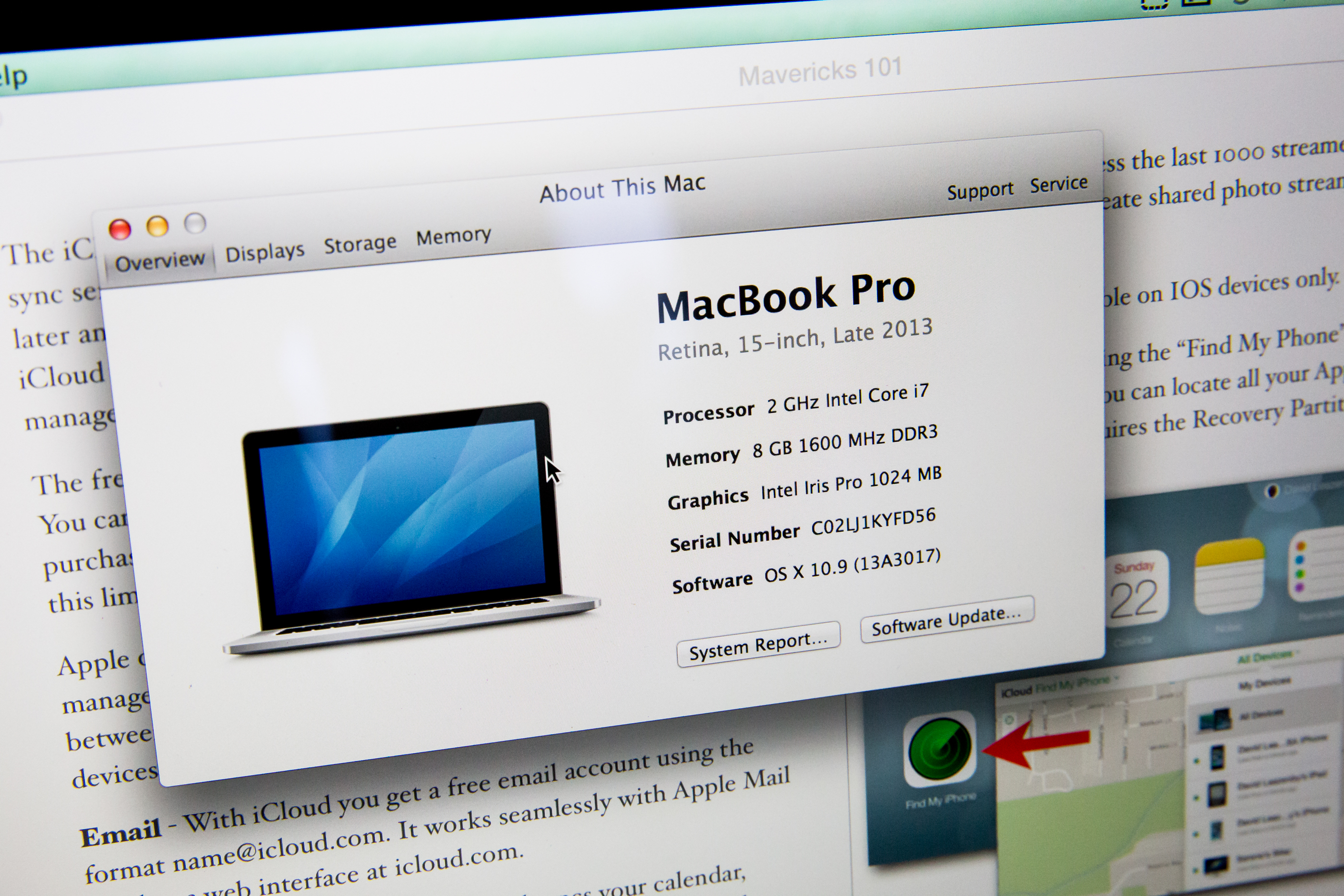
Battery
Apple’s 15-inch Retina MacBook Pro from mid-2012 boasted seven hours browsing time on Wi-Fi on a full charge; this year’s model bests that by an hour. Apple also said separately during its launch event earlier this week that the OS X Mavericks update it’s putting out will add about an hour to the Haswell MacBook Airs it just launched, so this could be mainly a software benefit. But in terms of actual usage, I found that indeed, the new version beats the old, even when both are running Mavericks.
Estimated life on a full charge on the new Retina MacBook Pro in my “extreme battery extension” conditions (Wi-Fi on, brightness to minimum visible, no keyboard backlight, Bluetooth off, running browser with just a few tabs) comes in at over 10 hours on the new version, while the older model barely edges out 9. In practice, the new version seems to get about two hours more than the older one given similar usage patterns. Some of that could be ascribed to natural decrease in battery health, but there’s still a difference, and it favours the newer machine.
Display
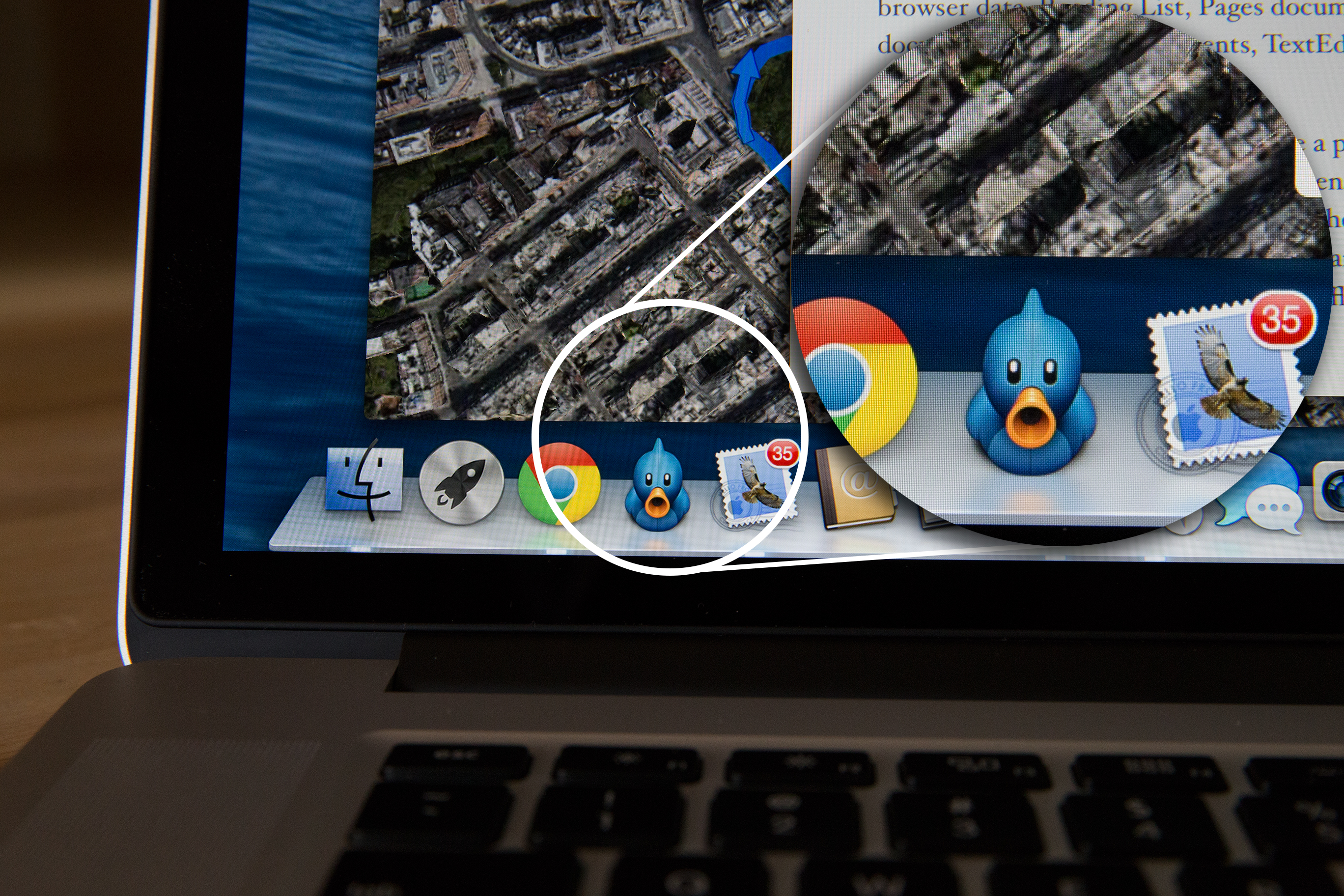 The screen on the Retina MacBook Pro this year looks as good as it always has, which is to say it’s the best in the notebook business. But Apple also appears to have gotten rid of any image ghosting on the 15-inch version, based on my tests, which was an issue that plagued a healthy percentage of last year’s model. Devoid of any of those failings, the 220 PPI screen is a visual smorgasbord. And as mentioned above, you can also tweak it to display at ultra high resolutions in non-Retina mode, giving you a still very crisp huge canvas to work with, arraying windows wherever you please.
The screen on the Retina MacBook Pro this year looks as good as it always has, which is to say it’s the best in the notebook business. But Apple also appears to have gotten rid of any image ghosting on the 15-inch version, based on my tests, which was an issue that plagued a healthy percentage of last year’s model. Devoid of any of those failings, the 220 PPI screen is a visual smorgasbord. And as mentioned above, you can also tweak it to display at ultra high resolutions in non-Retina mode, giving you a still very crisp huge canvas to work with, arraying windows wherever you please.
Maybe the best part about the screen is that by now, many websites and apps have managed to catch up with the concept of high-resolution screens. That means there’s more content that looks amazing on the 15-inch Retina MacBook Pro, versus when it launched back in June. I still remember marvelling at how ugly most of the web was when I switched; that’s no longer the case.
Bottom Line
This year’s Retina MacBook Pro packs some great new hardware features that were absent on the first-gen device, including Thunderbolt 2 (20 Gbps maximum throughout vs. 10 for the original) and 802.11ac Wi-Fi networking. Both are nice features, but mostly forward-looking, so if you’re not dissatisfied with your current Retina MacBook Pro I’d wait a cycle for the next upgrade, when 802.11ac will be more commonplace, and some peripherals will be able to take advantage of Thunderbolt 2’s higher data transfer rates.
On the other hand, this year’s model ships with iWork (Pages, Numbers and Keynote) free, which is a great productivity suite made even better. And Apple has ironed out any rough edges the bleeding edge first-generation Retina MBP may have had, so this is the one to get if you’ve been waiting for something better to come along, or if you were satisfied with your original machine but want something just *that* much better. Apple’s 13-inch and 15-inch MacBook Pros with Retina Displays are simply the best available notebooks, and which you choose depends totally on budget and priorities over anything else. If power is what you’re looking for, look no further than the 15-inch reviewed here.
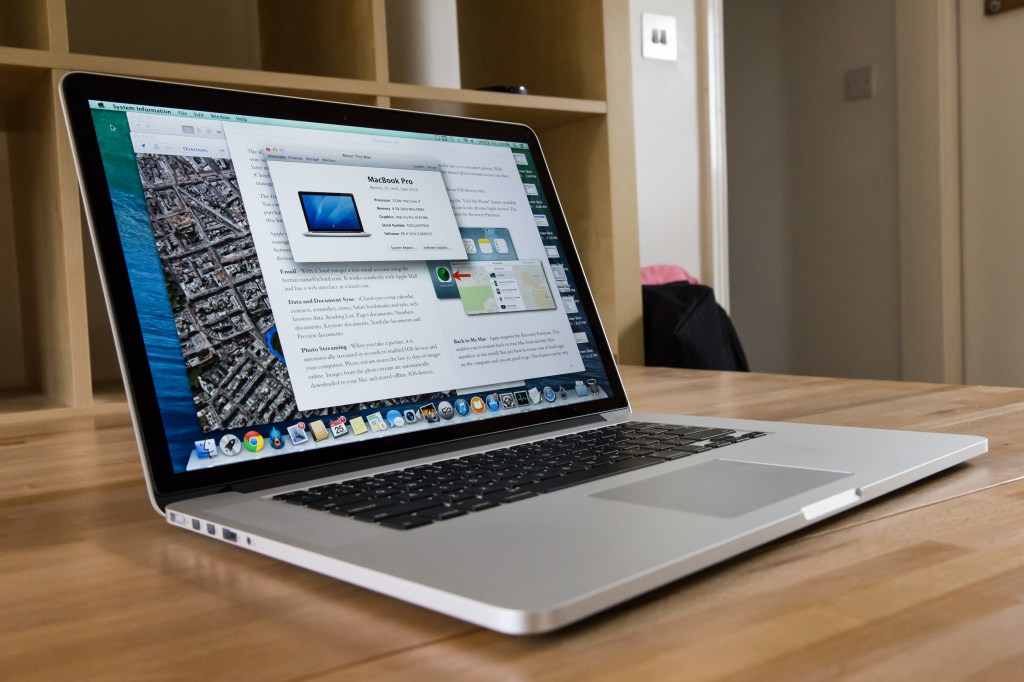
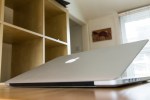
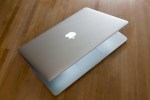
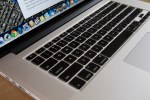
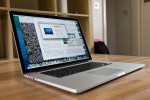
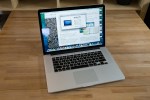
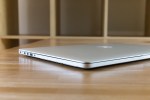
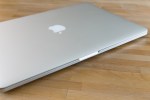
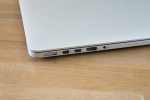
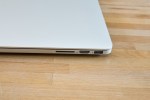
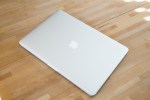




























Comment